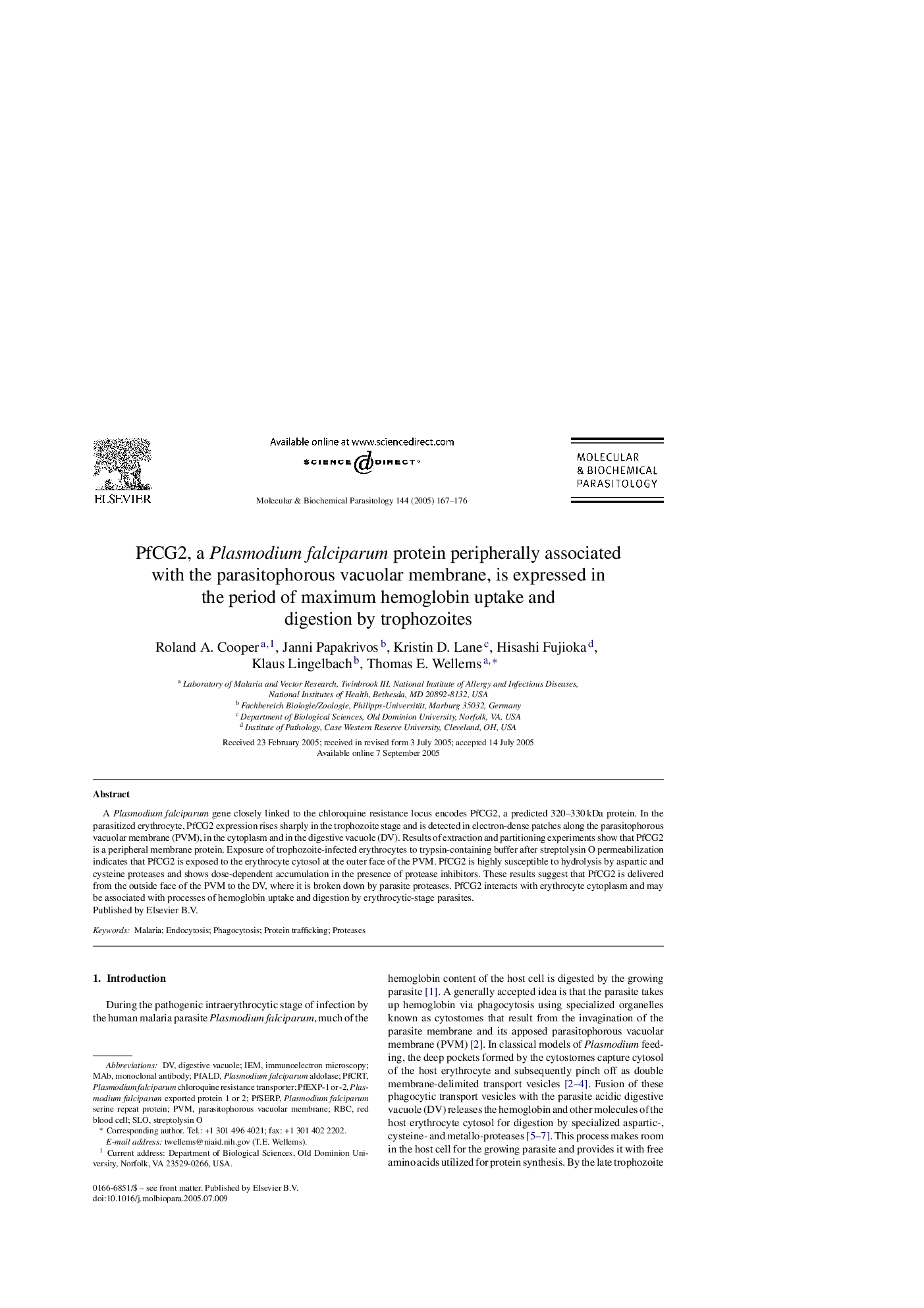| Article ID | Journal | Published Year | Pages | File Type |
|---|---|---|---|---|
| 9139922 | Molecular and Biochemical Parasitology | 2005 | 10 Pages |
Abstract
A Plasmodium falciparum gene closely linked to the chloroquine resistance locus encodes PfCG2, a predicted 320-330Â kDa protein. In the parasitized erythrocyte, PfCG2 expression rises sharply in the trophozoite stage and is detected in electron-dense patches along the parasitophorous vacuolar membrane (PVM), in the cytoplasm and in the digestive vacuole (DV). Results of extraction and partitioning experiments show that PfCG2 is a peripheral membrane protein. Exposure of trophozoite-infected erythrocytes to trypsin-containing buffer after streptolysin O permeabilization indicates that PfCG2 is exposed to the erythrocyte cytosol at the outer face of the PVM. PfCG2 is highly susceptible to hydrolysis by aspartic and cysteine proteases and shows dose-dependent accumulation in the presence of protease inhibitors. These results suggest that PfCG2 is delivered from the outside face of the PVM to the DV, where it is broken down by parasite proteases. PfCG2 interacts with erythrocyte cytoplasm and may be associated with processes of hemoglobin uptake and digestion by erythrocytic-stage parasites.
Keywords
Related Topics
Life Sciences
Biochemistry, Genetics and Molecular Biology
Molecular Biology
Authors
Roland A. Cooper, Janni Papakrivos, Kristin D. Lane, Hisashi Fujioka, Klaus Lingelbach, Thomas E. Wellems,
